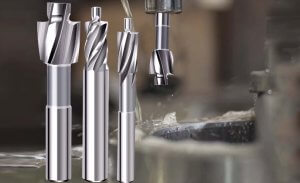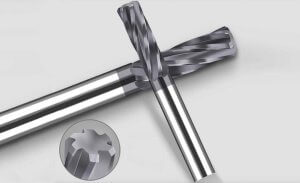CNC Machining and the Quest for Lightweight Materials: Aluminum-Lithium Alloys
CNC machining, standing for ‘Computer Numerical Control’, serves as a cornerstone of modern manufacturing processes. It leverages computer programming to control machine tools like drills, mills or lathes with high precision. The importance of lightweight materials in manufacturing has witnessed an increased credence due to several factors. First, these materials help reduce product weight which translates into improved energy efficiency – thus making the end-product more environmentally friendly. Secondly, lightweight materials offer superior mechanical properties like strength and durability, thereby enhancing the lifespan and performance of the manufactured goods.
CNC Machining and Its Importance
Computer Numerical Control (CNC) machining is a critical process that leverages modern technology to maintain precision requirements in manufacturing industries. The CNC process employs computers to control machine tools, including grinders, mills, routers, and lathes. Essentially, it uses coded programmed instructions eliminating the risk of human error, ensuring high accuracy, uniformity, and efficiency.
- Detailed Explanation Of Computer Numerical Control (CNC) Machining Process: A typical CNC system comprises several parts, like a part program, machine control unit, drive system, measuring system and feedback system. During operation, computer software instructs motorised machine components to move precisely on their respective axes. These movements are based on an encoded digital file inputted into the system, thus accurately manipulating materials to produce complex parts.
- Vital Technique In Manufacturing Industries: CNC machines have revolutionized various sectors such as automotive, aerospace, medical equipment, among others due to unparalleled consistency, intricacy, repeatability, speed and safety they provide in producing intricate designs. Furthermore, CNC machining minimizes waste generation by optimising usage of raw materials which contributes to cost-efficiency for businesses.
The Relationship Between Lightweight Materials and Manufacturing
Lightweight materials, such as aluminum-lithium alloys in the context of CNC machining, are substances that possess low density while boasting high strength. Their lower weight compared to traditional materials holds significant impacts on the manufacturing industry making them a subject of great interest.
The use of lightweight materials presents numerous benefits which include but aren’t limited to reduced energy consumption, enhanced performance, and increased output efficiency. Since they require less force for operations like cutting or drilling, the energy cost in production is significantly lowered. Their high-strength nature also improves product durability and lifespan thereby enhancing performance.
Moreover, due to their light nature, these materials enable faster movement along assembly lines resulting in quicker throughput times; an unprecedented advantage in today’s rapid-paced consumer market. For example, the automotive sector has greatly benefited from adopting aluminum-lithium alloys for parts manufacturing contributing to lighter, more fuel-efficient vehicles.
Aluminum-Lithium Alloys: An Exploration
Aluminum-Lithium (Al-Li) alloys are a group of lightweight materials that have gained significant attention in the manufacturing industry. Here is an exploration of these alloys:
1. Composition:
- Aluminum-Lithium alloys are primarily composed of aluminum and lithium, with small amounts of other elements such as copper, magnesium, and zirconium.
- The addition of lithium to aluminum enhances the strength-to-weight ratio, making these alloys lighter and stronger compared to traditional aluminum alloys.
2. Lightweight Properties:
- Aluminum-Lithium alloys offer excellent strength-to-weight ratios, making them ideal for applications where weight reduction is crucial.
- These alloys can achieve weight savings of up to 10% compared to conventional aluminum alloys, contributing to fuel efficiency and improved performance in aerospace and automotive industries.
3. High Stiffness:
- Aluminum-Lithium alloys exhibit high stiffness, providing structural integrity and stability in various applications.
- Their high stiffness allows for the design of lightweight components without compromising on strength and performance.
4. Corrosion Resistance:
- Aluminum-Lithium alloys offer good corrosion resistance, similar to other aluminum alloys.
- They can withstand harsh environments and are suitable for applications where corrosion resistance is essential.
5. Weldability:
- Aluminum-Lithium alloys have good weldability, allowing for ease of fabrication and assembly.
- They can be welded using various techniques, including TIG (Tungsten Inert Gas) welding and laser welding.
Aluminum-Lithium alloys have emerged as a promising choice for lightweight applications in industries such as aerospace and automotive. To learn more about CNC machining and the quest for lightweight materials, you can refer to our Knowledge Base.
The Role of Aluminum-Lithium Alloys in CNC Machining
The utilization of aluminum-lithium alloys in the process of Computer Numerical Control (CNC) machining plays an instrumental role, especially in producing lightweight yet highly efficient machine parts. Its key contribution lies significantly within its impressive properties of high strength-to-weight ratio and corrosion resistance, which allows for the making of more robust, long-lasting, and reliable components. The following are the specific ways this alloy contributes to the enhancing output:
- By introducing lithium into the blend, the density of aluminum gets significantly reduced while still maintaining a high level of stiffness and resilience to harsh conditions.
- This unique combination results in components that can withstand heavy usage overtime without succumbing to wear and tear easily.
- Furthermore, these alloys provide excellent machinability, ensuring smooth operations throughout the entire manufacturing process, thus reducing both time and cost efficiencies as well.
An example application of such an alloy is seen within the aerospace industry where weight considerations hold utmost importance. Contractors now rely heavily on this aluminum-lithium alloy when constructing sophisticated parts of aircraft or spacecraft due to their undeniably beneficial attributes, testifying to its critical function in advanced CNC machining technology.
Advantages and Challenges with Usage of Aluminum Lithium Alloys
The adoption of Aluminum Lithium alloys in CNC machining presents a profound shift towards achieving lightweight materials. Foremost, this combination carries the advantage of significant weight reduction, which subsequently results in improved fuel efficiency for various industries such as aerospace. By incorporating lithium, aluminum becomes less dense without compromising its strength – a characteristic esteemed in high-stress environments.
Despite these impressive benefits, there are challenges that impede its widespread use: in particular, cost and availability. Manufacturing quality Aluminum-Lithium alloys demands precision and advanced equipment making them expensive to produce. Furthermore, sourcing lithium can be sporadic due to limited suppliers globally. It thus necessitates a careful analysis of financial implications and accessible material supply before embarking on production using Aluminum-Lithium alloys.
Conclusion: The Importance of Lightweight Materials in CNC Machining
In concluding, the quest for lightweight materials in CNC machining has seen a significant tilt toward aluminum-lithium alloys due to their exceptional properties. With a terrific blend of strength and lightness, these advanced materials mitigate weight-related issues prevalent in conventional materials, hence improving efficiency and performance of machined parts.
- The overarching narrative revolves around a continual search for material optimization that is both cost-effective and yields enhanced results.
- This article underscores why aluminum-lithium alloys have emerged as front runners – they lower density, increase modulus, minimize fuel consumption when used in aerospace industry applications, and offer excellent machinability while preserving mechanical integrity.
Thus, the adoption of such novel materials contributes considerably to the future progression of manufacturing industries, especially where there’s a pressuring need to reduce component weights without sacrificing durability or overall functionality. Reminding ourselves about this can keep us focused on pushing further towards innovation in CNC machining methods.
Other Articles You Might Enjoy
- Understanding CNC Machining: From Materials to Techniques( anodized aluminum Linda)
In the world of precision machining, Computer Numerical Control (CNC) technology plays a critical role. With an array of materials such as titanium, aluminum, cast iron steel, and innovative techniques…
- Innovations in CNC Machining: High-Temperature Alloys vs. Traditional Materials
CNC Machining: Its Techniques and Significance in Material Selection Computer Numerical Control (CNC) machining, a fabrication method extensively employed within the engineering realm, manipulates pre-programmed computer software to regulate factory…
- Material Considerations for High-Speed CNC Machining: Aluminum Alloys vs. Titanium
Introduction: High-Speed CNC Machining and Material Considerations In the world of modern manufacturing, High-Speed CNC (Computer Numerical Control) machining plays a pivotal role in producing precision parts at fast turnaround…








